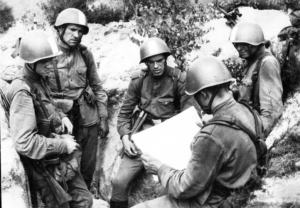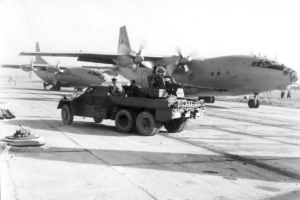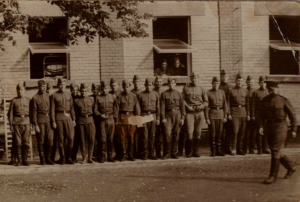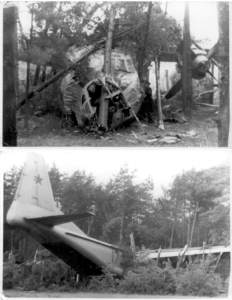August 1968 in the base Milovice-Mladá

Soviet soldiers during the ŠUMAVA exercise, which took place in the territory of the Czechoslovak Socialist Republic from June 20th to 30th, 1968.
In the atmosphere of the culminating crisis between the Czechoslovak Socialist Republic and other socialist states, a Warsaw Pact command and staff exercise called ŠUMAVA took place in Czechoslovakia in June 1968. Its headquarters were located in the Mladá Military Training Area (VVP). Under the cover of the ongoing exercises, the Soviets were preparing a military solution to the Prague Spring.

Soviet soldier at the state border of the Czechoslovak Socialist Republic in August 1968.
The Soviet leadership ultimately decided to intervene militarily in Czechoslovak Socialist Republic. The invasion, codenamed Operation DANUBE, was launched on August 20th, 1968, between 10 and 11 p.m. In addition to the Soviet Army, troops from the Polish People’s Republic, the Hungarian People’s Republic, the Bulgarian People’s Republic, and the German Democratic Republic participated. 30 divisions crossed the borders of Czechoslovakia, 20 of them in the first invasion wave.

Mechanics at Boží Dar Airport watching Soviet planes landing.
The Ministry of National Defence issued an order to the Czechoslovak People’s Army (ČSLA) not to resist the occupiers. In Milovice, the deputy commander of Boží Dar Airport, Lieutenant Colonel Křena, was the first to learn about the ongoing invasion. At 0:55 a.m. he ordered the runway lighting and other guidance equipment to be turned off. Soviet aircraft could not land until the airport was occupied by ground forces.

Unloading material from Soviet Antonov AN-12 aircraft. Boží Dar Airport, August 1968.
The garrison of Milovice-Mladá was captured by soldiers of the Soviet 20th Panzer Division. Its vanguard arrived at 4:35 a.m. from Benátecká Vrutice. Soviet vehicles blocked the exits from the barracks and the airport. Immediately afterwards, a representative of the Soviet command arrived at the headquarters of the 13th Tank Division of the Czechoslovak People’s Army and strongly demanded the evacuation of the entire garrison and the disarmament of the Czechoslovak units. The impending conflict was averted by the Chief of the General Staff of the Czechoslovak Army, Rusov, who agreed with the Minister of Defence of the USSR, Grechko, to evacuate only the so-called second camp, where the command staff of Operation DANUBE moved on August 24th.

Soviet soldiers in the Mladá VVP, September 1968.
Milovice citizens expressed their opposition to the occupation through numerous protests, painting over road signs, and damaging the Welcoming the Soviet Soldier statue in front of the elementary school. The local national committee (MNV) issued a statement demanding the immediate departure of the intervention troops. The resolution was signed by hundreds of citizens and sent to the Soviet embassy in Prague.

Soviet soldiers in front of one of the buildings of the so-called Austrian camp in October 1968.
Despite the radical mood among Czechoslovak soldiers in Mladá and Boží Dar, there were no violent clashes. The soldiers vented their frustration by smashing objects being handed over, blocking water supplies, and demanding the cancellation of the honorary title of the 13th Tank Division of the Czechoslovak-Soviet Friendship. At Boží Dar airport, Czechoslovak People’s Army soldiers deliberately disrupted communication between Soviet air traffic controllers and pilots. They allegedly caused the crash of a Soviet transport plane.

A Soviet Antonov AN-8 transport plane that crashed at Boží Dar Airport on August 21, 1968. According to military counterintelligence, the accident was caused by Czechoslovak People’s Army soldiers who were interfering with radio communications.
Did you know that…? Tank units of the Armed Forces of the Polish People’s Republic were also deployed in the vicinity of Milovice.
Message to the occupiers at Boží Dar
